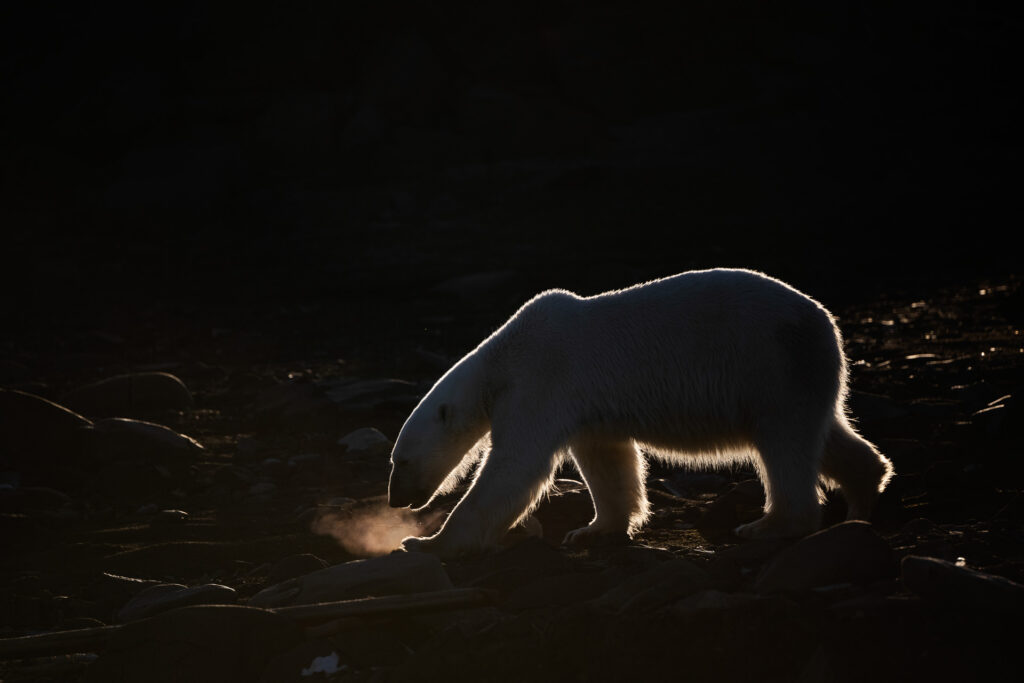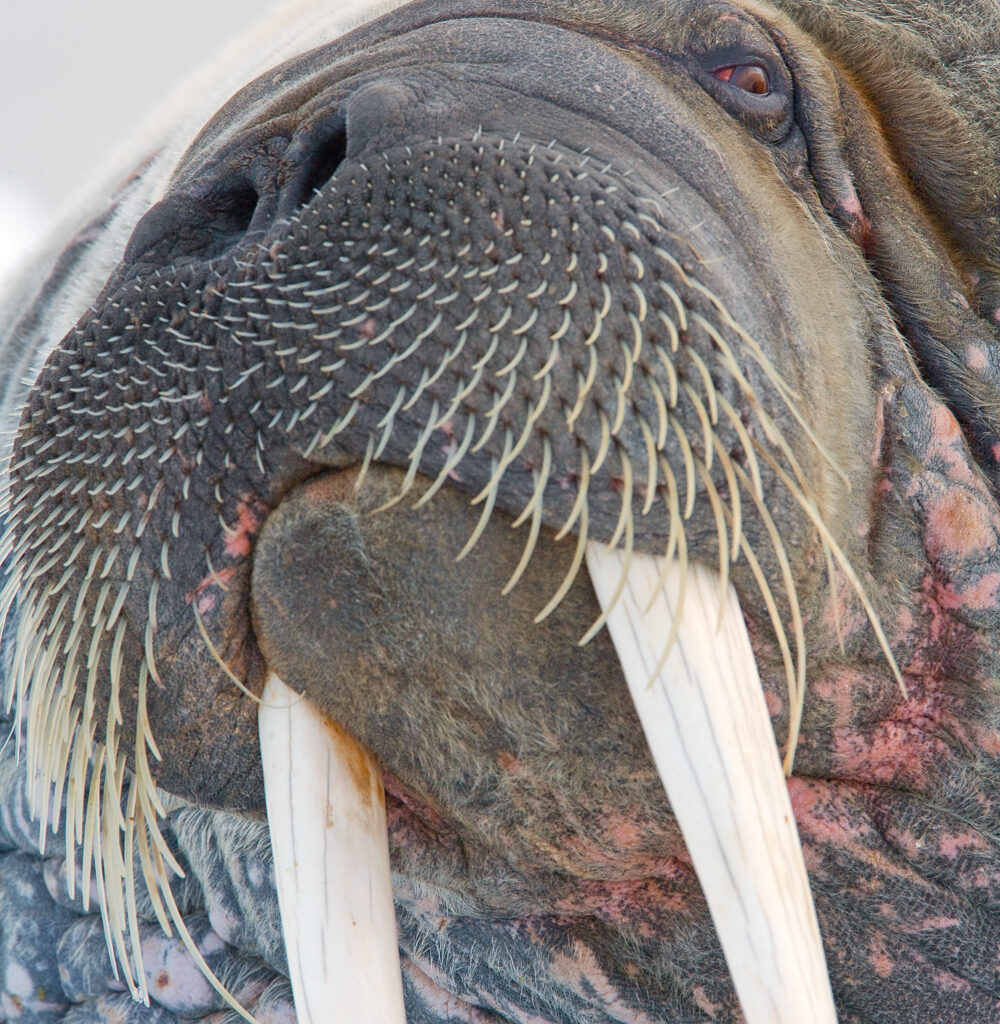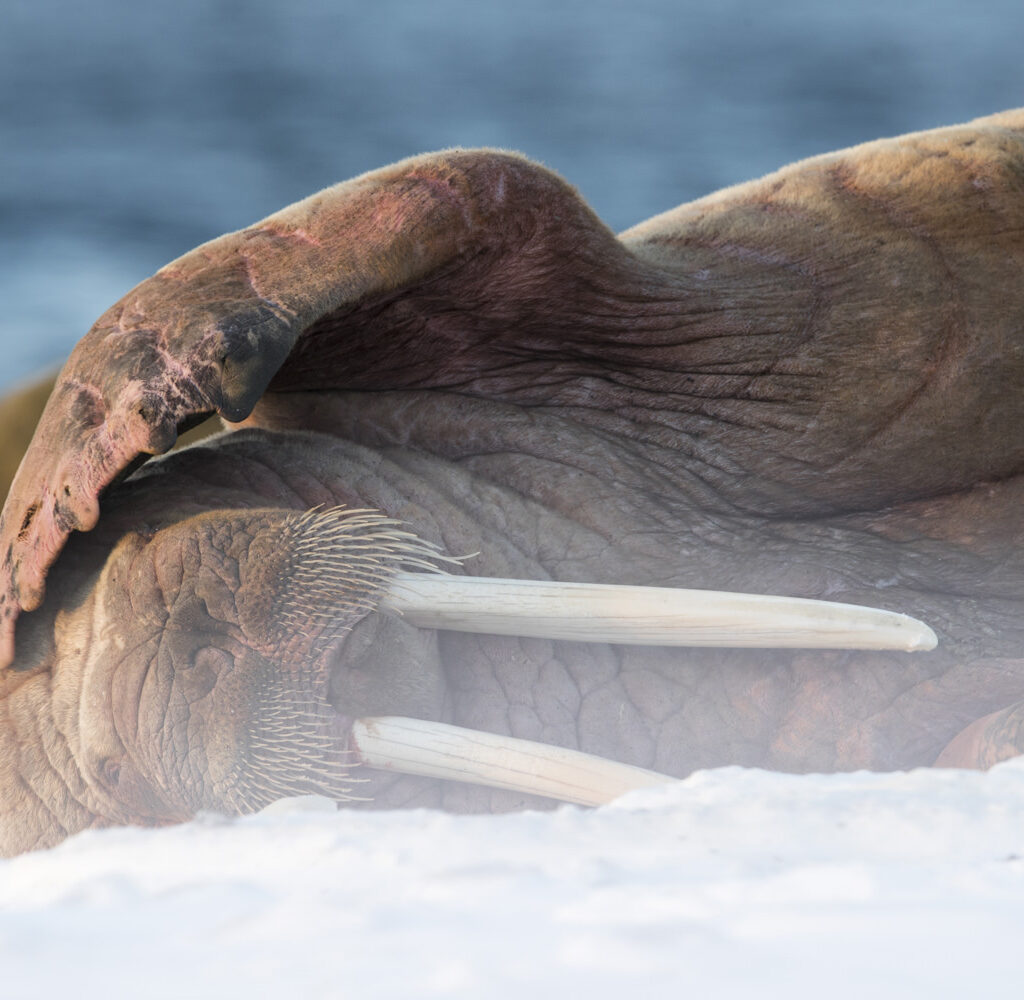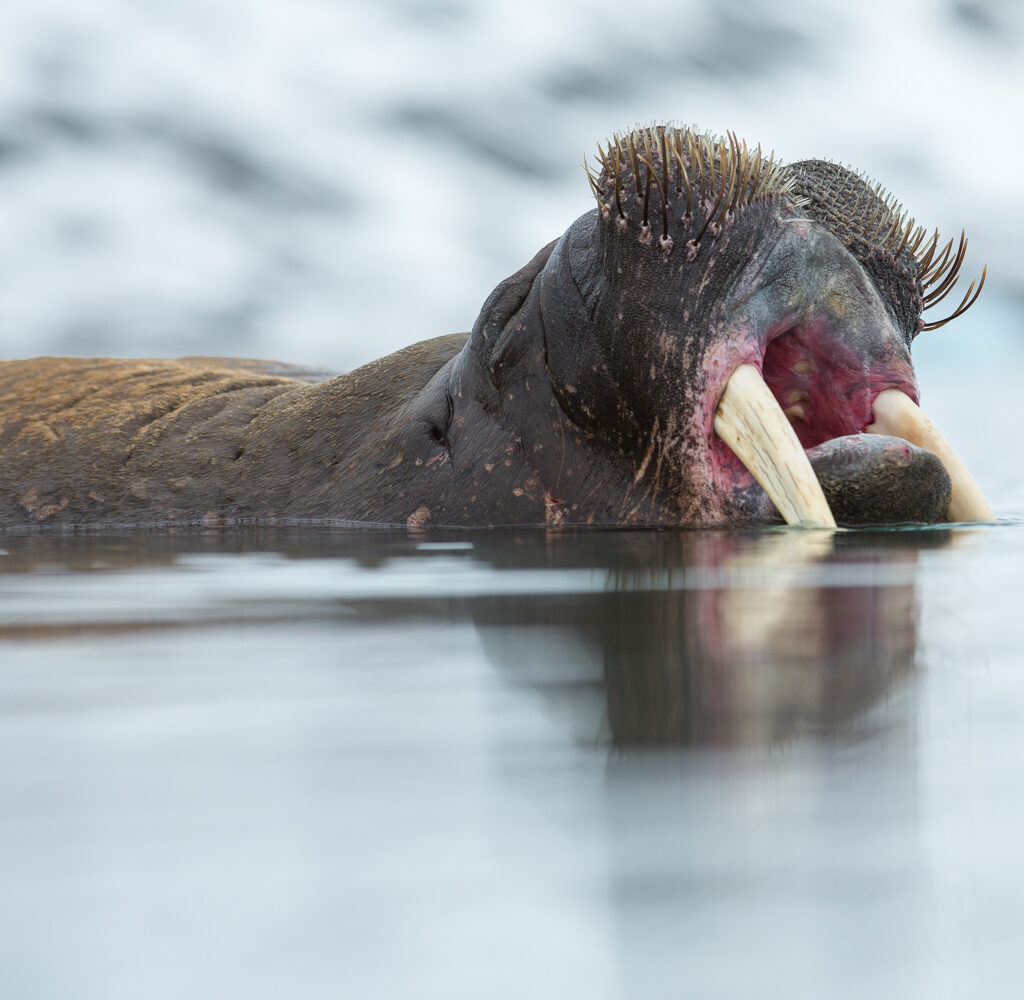The return of the Walrus on Svalbard
The Walrus on Svalbard is one of the species we see more and more in Svalbard. The populations are growing after being almost exterminated back in the 1960`s. The story about the return of the Walrus on Svalbard is an exciting story proving that conservation work works. Walruses is also a possibility for our travelers to add great experiences to their journey with us by being close to such personalities Walruses can be.
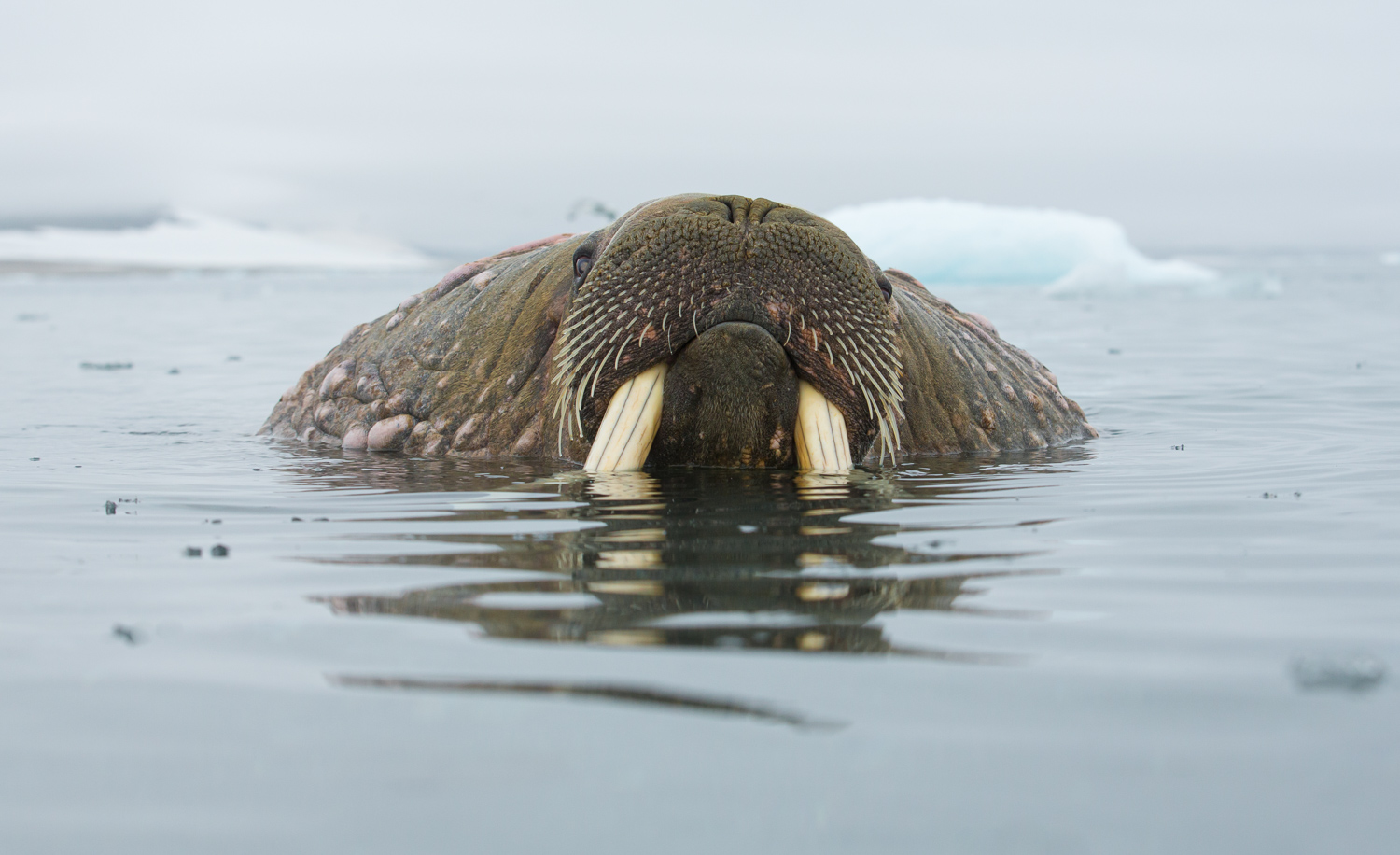
There are two populations of walrus. The Atlantic walrus with approximately 25,000 and the Pacific walrus with 200,000. They feed on invertebrates, mussels, clams, crabs and soft corals. They have been recorded being capable of diving to a shocking depth of up to 500 meters but generally don’t go much deeper than 30 meters. The bigger the animal the deeper the dive due to the ability to hold more oxygen in their body. These deep dives beyond 100 meters are not routine behavior as they generally spend time on ice flows where it´s shallower so that they can feed easily while the ice also provides a place for them to rest.
On Svalbard the Walrus population was almost gone before 1970. After a total protection the population has slowly increased. The only "haul out" was at the small island Moffen north of Spitsbergen back then.
The "haul-outs" for Walruses has a increased number of animals
The average life span of a walrus is 40 years. Their tusks grow continually, the older the walrus the longer the tusks, growing up to 3 feet in length and are considered to be their canine teeth. They use their tusks to haul themselves out of the water and to break breathing holes in the ice when needed. They are often seen using their tusks violently to maintain or claim territory. It is difficult to watch this aggressive behavior with the tusks and the injuries they cause as a result.
With the disappearing sea ice in late summers, the walrus is more commonly “hauling out” in massive numbers onto land. This overcrowding behavior is a part of the animals behavior and also a dangerous risk to the walrus as they are easily frightened or surprised by anything. Especially polar bears due to research done on Svalbard. The scent of a predator or perhaps a plane over head or an unfamiliar noise, will cause them to panic and rush to the water by the tens of thousands, weighing up to 1500 kilograms, trampling smaller walruses to death.
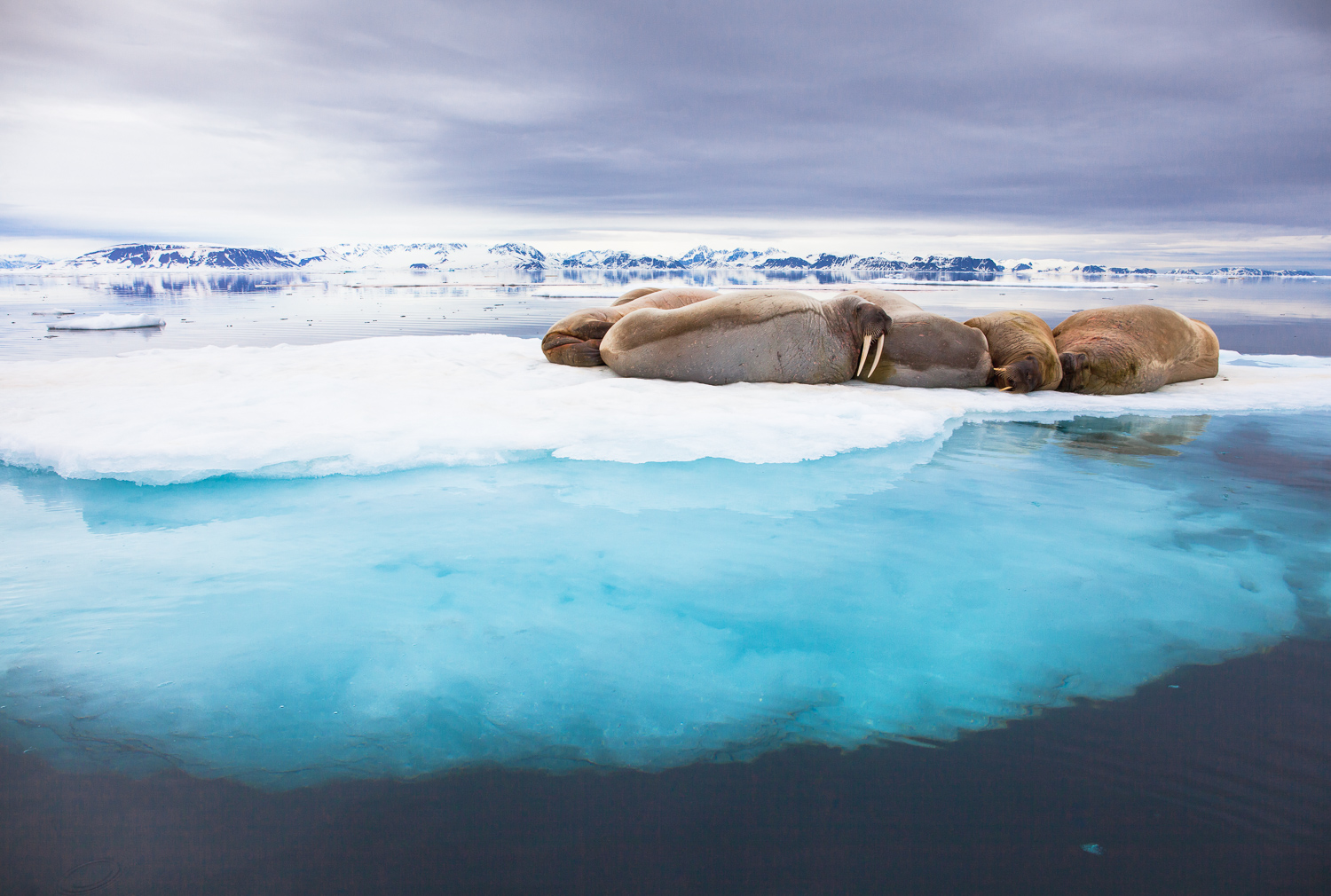
We in Arctic Wildlife Tours appreciate the Walruses populations increasing every year. The huge animals has their own personality and we love encountering these animals in the wild as much as any other wildlife on Svalbard. Their return onto Svalbard is also a fantastic story about a heavily hunted animal can return into the wild as soon as it is protected from hunting. Around the world hunting is the worst thing humans can do to our wildlife. Nothing is as devastating to wildlife populations as hunting in a short term.

In 2011 the walrus was considered to be endangered but in 2017 it was decided they do not require protection as threatened or endangered, however their behavior of “hauling out” is proof they are trying to adapt to less ice and survive the warming effects of the sea. They are now listed as “vulnerable.” With very little ice to rest on they are forced to swim long distances to land for rest and to feed in the shallows around the shores rather from ice flows.
Currently only Native Americans are allowed to hunt walruses, their survival in the past was threatened by overhunting. Hunting walrus was banned in 1952 and total protection is still enforced in Svalbard today. They were almost extinct in Svalbard in 1952 with possibly only 100 animals left. After 60 years of protection the population has increased but is still considered small with approximately 5000 walruses.
Today a increasing population creates a food source for other arctic wildlife as arctic foxes and polar bears. Every year we find dead walruses around the islands of Svalbard, and always polar bears and foxes are attracted to the carcasses. Probably a huge food source for such wildlife.

Upcoming Svalbard tours
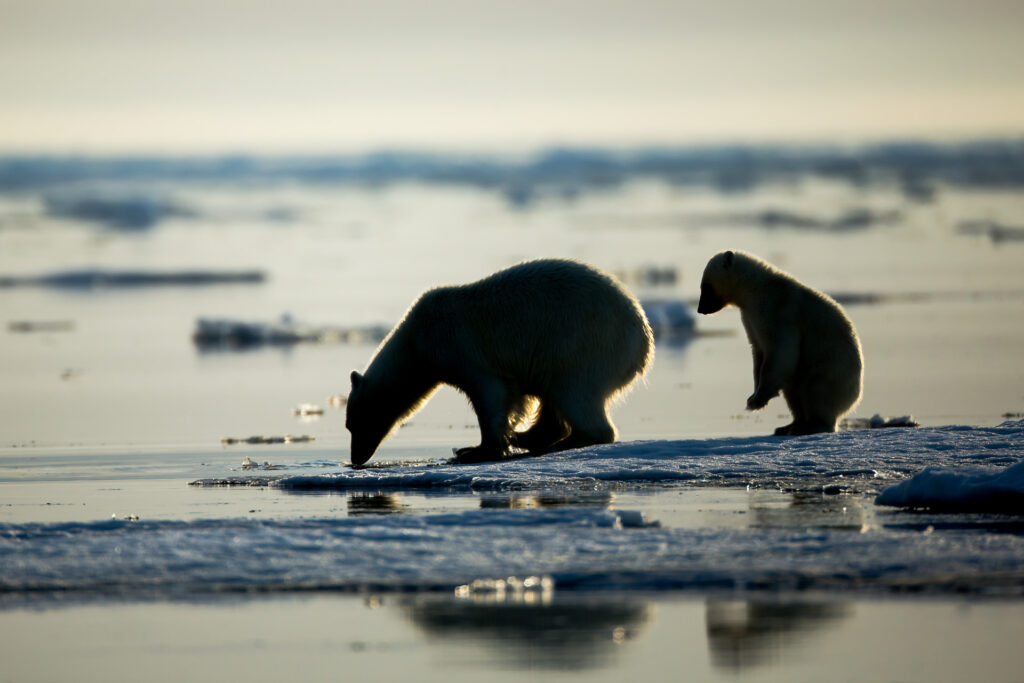
Main Wildlife season
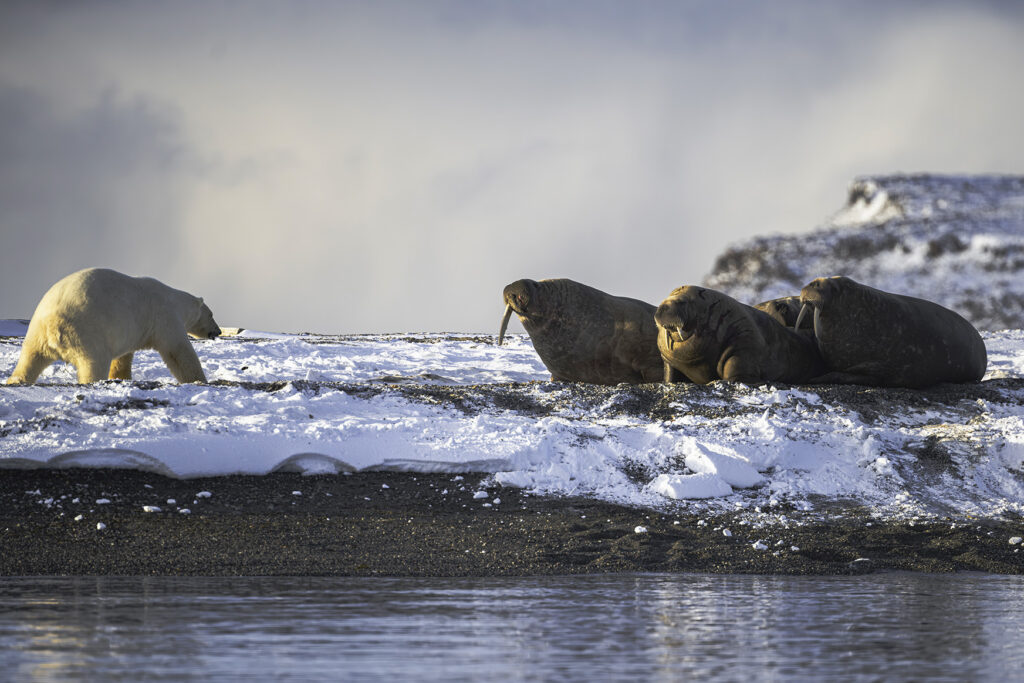
Svalbard September Expedition
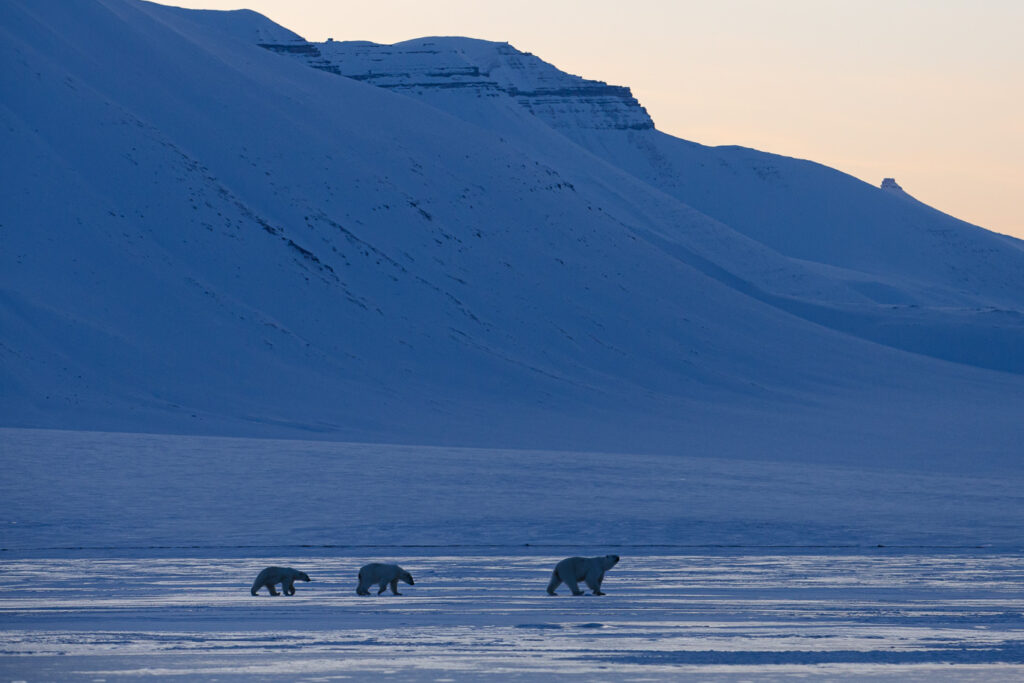
Frozen Svalbard expedition

Peak Wildlife season
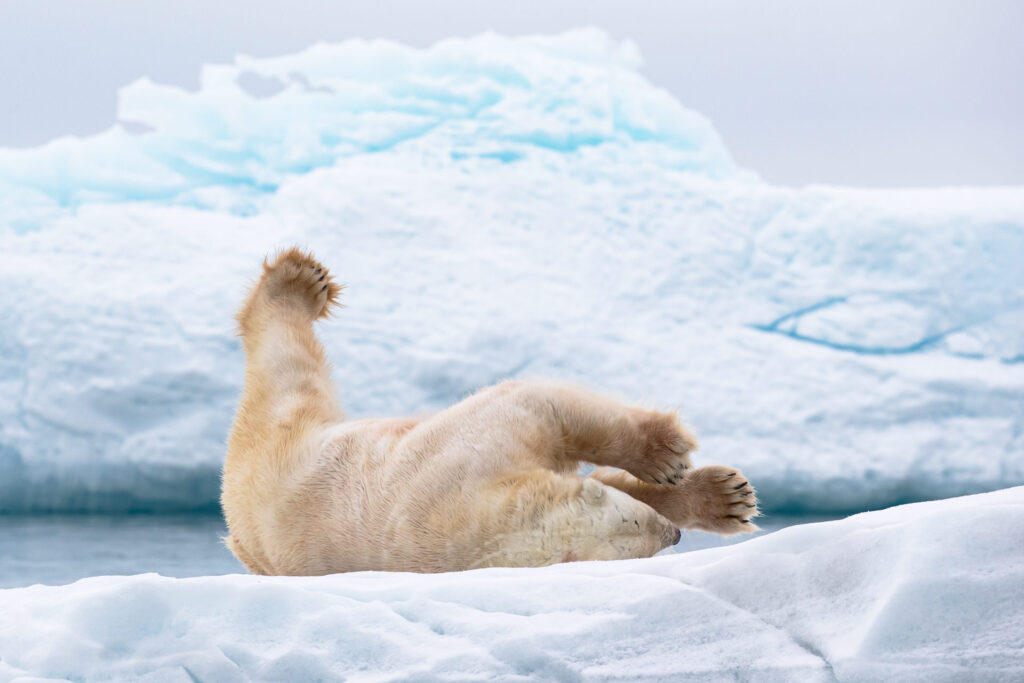
Peak Wildlife season Svalbard

Peak Wildlife season

Into the drift ice
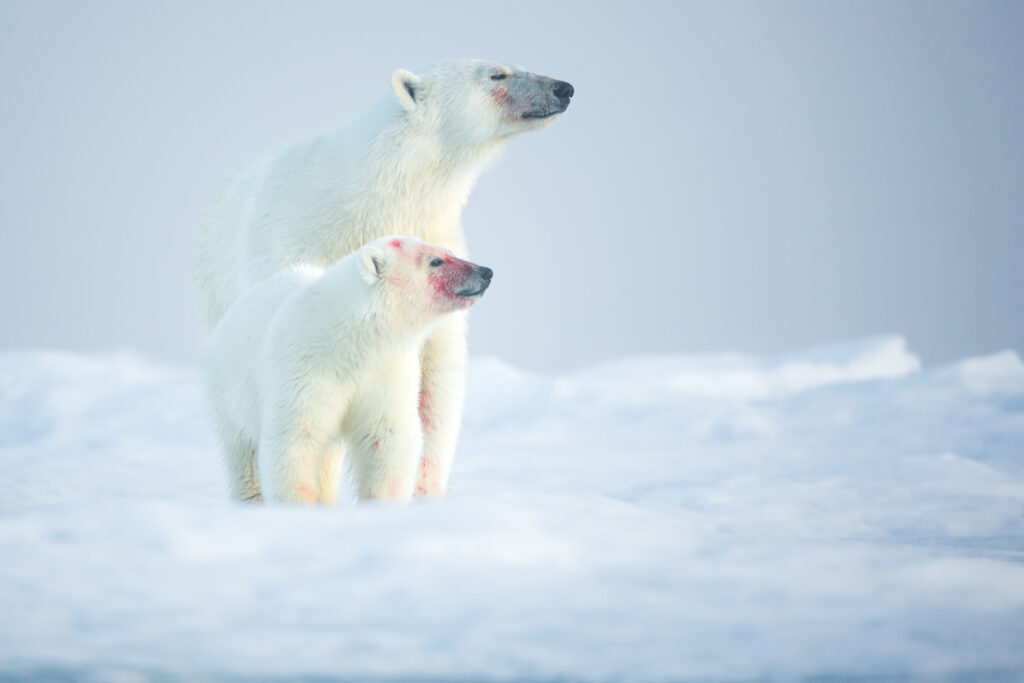
Into the drift ice
